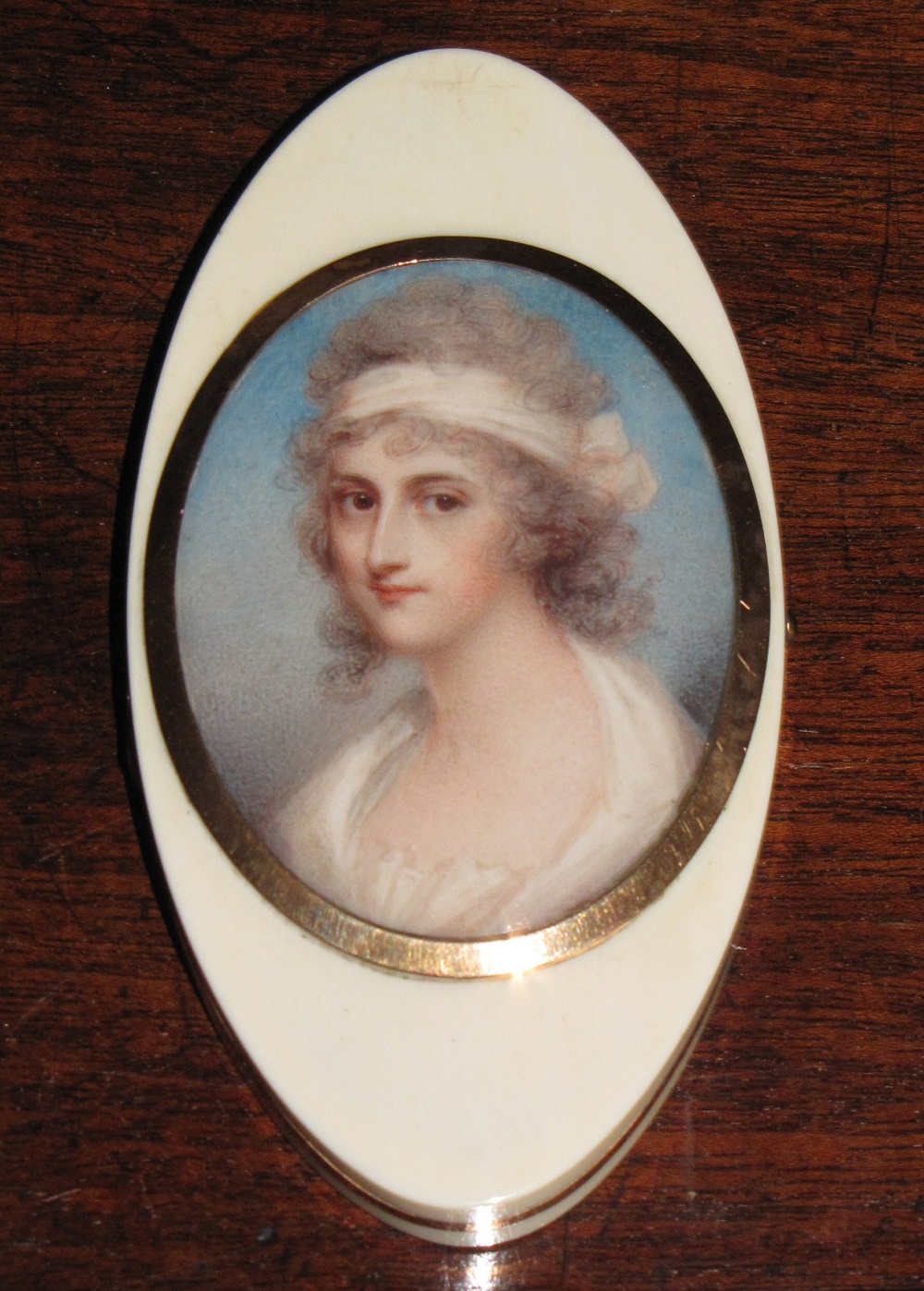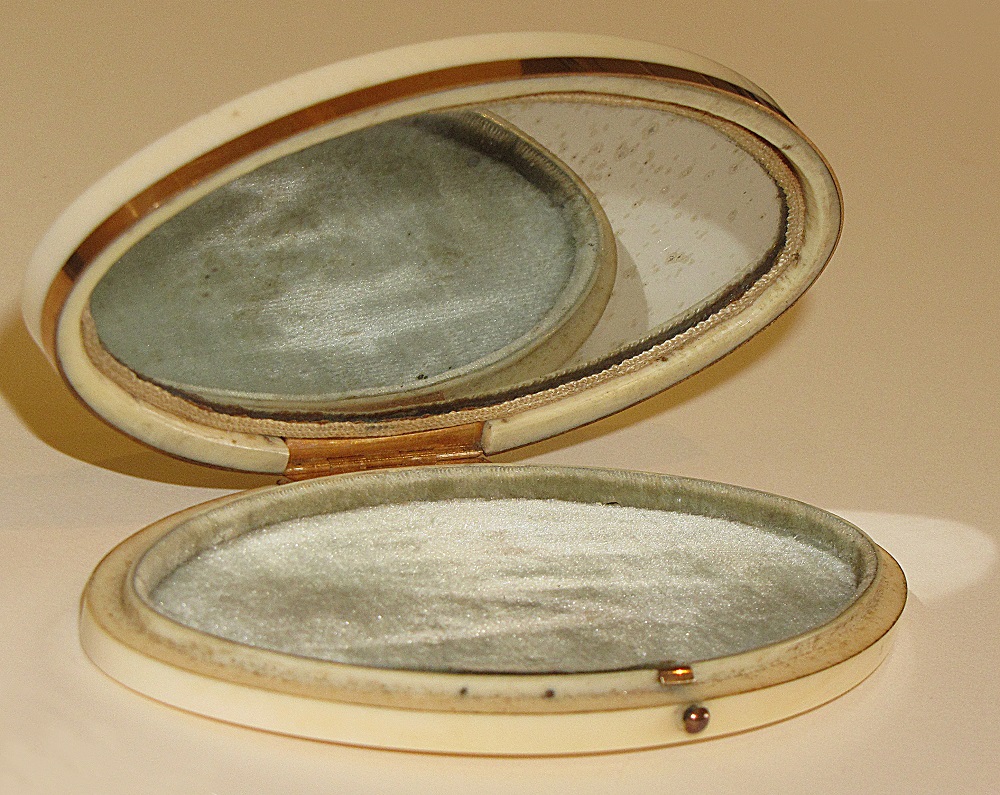Patch box with a portrait of Elizabeth Austen
Object name: Ivory and gold mounted oval patchbox, the cover inset with a portrait miniature on ivory.
Object number: CHWJA:JAH27
Category: Objects
Description: Ivory and gold mounted oval patchbox, the cover inset with a portrait miniature on ivory of Elizabeth Austen nee Bridges (1773-1808), wife of Jane Austen’s brother Edward. The interior contains a velvet pad; the inside of the lid is inset with a mirror. George III period. The miniature is believed to have been painted by the highly successful and prolific artist Anne Mee.
Made: c1791
Context: Influenced by the French court, face patches were very fashionable in the 17th and 18th centuries. Most commonly made from taffeta, velvet or paper, these false beauty spots were generally stuck to the face with mastic or Gum Arabic. Patches could be a simple round shape like a natural beauty spot or shaped as a star, crescent, diamond or heart. The position of the patch on the face could have different meanings, with a patch near the lips being considered flirtatious and one by the eye indicating passion.
The boxes used to store the patches in were usually made of gold with a painted or enamelled lid and could be jewelled.
Patching fell out of fashion in the late 1700s as more natural makeup became fashionable.
Elizabeth Austen was the beloved wife of Jane’s third brother Edward. The third daughter of Sir Brook Bridges of Goodnestone Park (which was near the Knight estate of Godmersham that Edward was to inherit), Elizabeth married Edward in December 1791. She bore him eleven children in seventeen years giving birth to her eleventh child, Brook John, on September 28th 1808. Less than two weeks later she was dead presumably of childbirth related complications. Unlike his brothers James, Henry, Frank and Charles, Edward never remarried.
It has been suggested that Elizabeth’s younger brother Edward proposed to Jane Austen during a visit to Goodnestone Park in 1805 but was politely rebuffed.
Other objects you might like:


